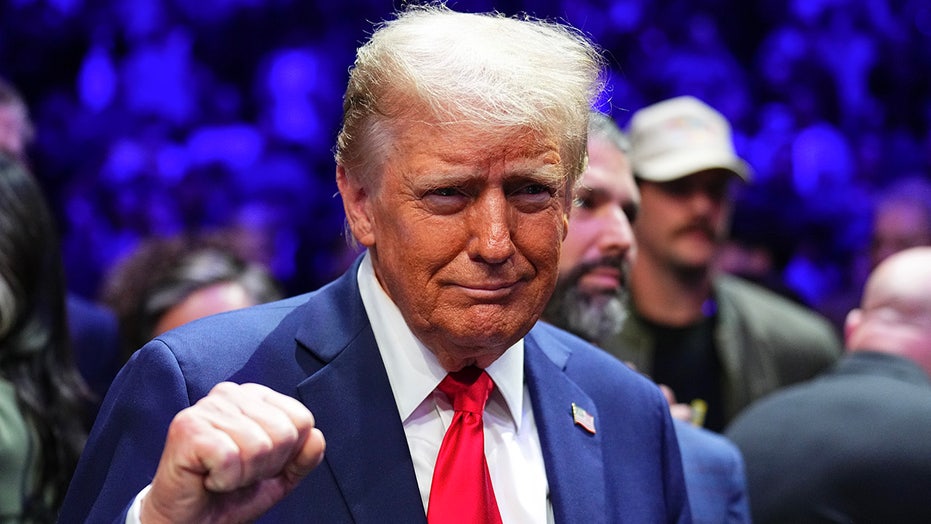The Surprising Takeaway From My Year-Long Survey of GOP Chairs
How Trump tightened his grip on the GOP nomination.

One year ago, I set out to learn how local Republican powerbrokers would shape the 2024 presidential race. What I found surprised me, though perhaps it shouldn’t have.
As I surveyed GOP county chairs across the country, I thought they would provide an early signal as to where the Republican nomination would end up. County chairs are influential in local GOP circles, party leaders who can offer the kind of endorsements that candidates are eager to collect. They’re also still close to the rank-and-file grassroots, and their shifts, I imagined, would signal where the rest of the party was going.
But instead, I found that the county chairs didn’t lead their voters. For the most part, they followed them — to Donald Trump.
Last February, the county chairs were less supportive of Trump than Republican primary voters as a whole. Yet as time went on, and Trump consolidated support among rank-and-file voters, the chairs fell in line. It’s a reflection of the state of the GOP that has existed since 2016 when Trump first snatched the nomination away from the establishment and took over the Republican Party.
In the pre-Trump era, GOP leaders clearly played more of a role in steering the direction of the party. The 2012 campaign is instructive: Many different candidates were briefly the favorites of rank-and-file Republican voters, from Rick Perry to Herman Cain to Newt Gingrich to Rick Santorum. But throughout the cycle, party elites’ money and endorsements stayed focused on Mitt Romney, and that’s who got the nomination. This year’s ongoing survey of county chairs illustrates how Republican elites are now more responsive to the grassroots rather than the other way around — either because they lack the interest or the ability to do anything else.
Webster Franklin, the chair of the Republican Party of Tunica County, Mississippi, recently came off the fence for Trump. “I’ve always been a supporter of President Trump but wanted to see what happened in Iowa and New Hampshire,” he said. “It’s clear that the former POTUS will and should be the nominee.”
As director of the Center on American Politics at the University of Denver, I sent this latest survey in February to roughly 2,300 GOP chairs, in nearly every county in the country; 104 Republican chairs responded, about the same number who responded in the previous survey in December. This final survey explores not only which candidate had the most backing from GOP county chairs (obviously Trump) but which candidates they supported after their previous favorite dropped out. It also delves into the demographic breakdown of Trump and Nikki Haley supporters and underscores why the former South Carolina governor will have such a difficult time catching up to Trump.
The main question I asked was simply whether the county chairs had committed to supporting a candidate, and if so, whom that might be. When I launched my first survey a year ago, Trump was looking vulnerable and was roughly tied with Florida Gov. Ron DeSantis among those who had committed to a candidate. Then Trump’s support surged last April from 16 percent to 24 percent in the wake of the first set of indictments against him, and jumped again from August to October, from 27 to 37 percent. By then, DeSantis had been left behind in the single digits.
The most recent survey follows the first few contests, including the Iowa caucuses and New Hampshire primary, and a wave of candidate departures. Trump saw his largest boost so far and secured a majority of chairs’ support, going from 37 percent to 54 percent.
“There is now no other viable Republican candidate other than Donald Trump,” said John Goyke, chair of the Republican Party of Whitman County, Washington.
Haley’s numbers have also risen substantially. The percent of chairs supporting her jumped from 5 percent to 16 percent from October to December, and then to 24 percent in the most recent survey conducted in February. According to Michael Dittmar, the GOP chair of Jo Daviess County, Illinois, “I supported Trump, but after Jan. 6, I will not support him. Haley has experience as an executive, has experience with foreign policy and is younger.”
I next asked the chairs which candidates they had previously supported if their previous preferred candidate had dropped out, and where they stood now. Both Haley and Trump have benefited from other candidates withdrawing, although there’s a clear breakdown as to who is winning over which supporters.
Chairs who had formerly supported DeSantis now strongly backed Trump: 51 percent of them became Trump supporters, while 21 percent were Haley supporters and 26 percent were undecided. The chairs who had formerly supported Vivek Ramaswamy broke even more strongly for Trump, with 68 percent backing the former president, just 14 percent backing Haley and 18 percent undecided.
Meanwhile, the chairs who described themselves as former supporters of Tim Scott broke slightly more in Haley’s direction, with 40 percent backing her, 36 percent backing Trump and 16 percent undecided. Of the small contingent of chairs who considered themselves former supporters of Chris Christie, all but one backed Haley and the other was undecided.
The demographic profiles of those who support Trump and Haley, and those who are undecided, differ somewhat from each other. Trump supporters are, on average, a decade older than Haley supporters (with median ages of 63 and 53, respectively), and the undecided are older still (66). Haley supporters are almost exclusively male, while just 71 percent of Trump’s supporters are men. 79 percent of the undecided are men.
Haley supporters are also considerably more educated than Trump supporters, with 92 percent having a college degree, compared with 62 percent of Trump supporters. The undecided come in between those at 79 percent.
Meanwhile, 60 percent of Trump’s supporters said they attend church at least weekly, compared with 56 percent of Haley supporters and the undecided. Forty-five percent of Trump’s supporters consider themselves “very conservative,” while Haley supporters and the undecided are far more likely to call themselves “conservative” or “moderate.” Nearly half of both Trump and Haley supporters report making at least $100,000 per year, with similar results for the undecided.
It’s notable that in at least some of these measures, especially ideology and church attendance, the undecided look more like Haley supporters than Trump supporters. That’s potentially a plus for her because it means she has room to grow. But given the overall results, it is difficult to see how Haley wins the GOP nomination. Even if she were to win over all the undecided county chairs, she’d still be trailing Trump.
The survey results largely echo Haley’s performances in the first few primaries, including her most recent loss to Trump in her home state of South Carolina. Haley continues to do better among the more educated and more moderate voters — and it hasn’t been nearly enough to overtake Trump. There’s little reason at this point to think that will change.
Most county chairs did not start out as Trump supporters, but like others in the Republican Party, they eventually got behind him.



